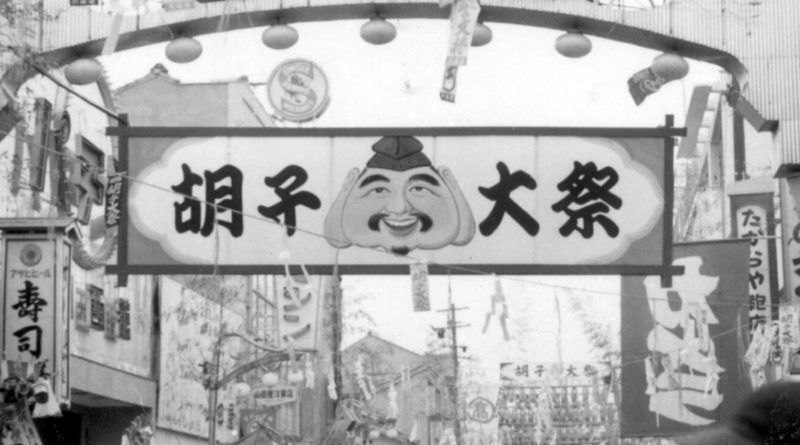Vintage photos of Hiroshima Ebisu Matsuri in the 1950s
Local electrician’s photos capture Ebisu Matsuri in the 1950s during the time of Hiroshima’s recovery from the A-bomb.
It was great to see Hiroshima’s city center buzzing with festival fervor once more at the return of the annual Ebisu-ko Matsuri last weekend. One of the things that give this 3-day festival, dedicated to the cheery god of Ebisu in hope of success in business and life, its fun vibe are the colorful decorations that go up along Ebisu-dori and the surrounding shopping arcades.
Chugoku Shinbun published some awesome black and white photos which show some of these decorations from the early 1950s, less than 10 years after the A-bomb destroyed the entire city center.

The photos belong to 76-year-old Hiroyuki Mineno who runs a little electronics store in the Nagarekawa district, a short distance from Ebisu Shrine. The photos were taken by his uncle, Takayoshi Mineno, former president of the the company, who died at the age of 82 in 1995. Takayoshi was contracted to wire the lights in huge lantern towers that were displayed near the shrine during the festival.
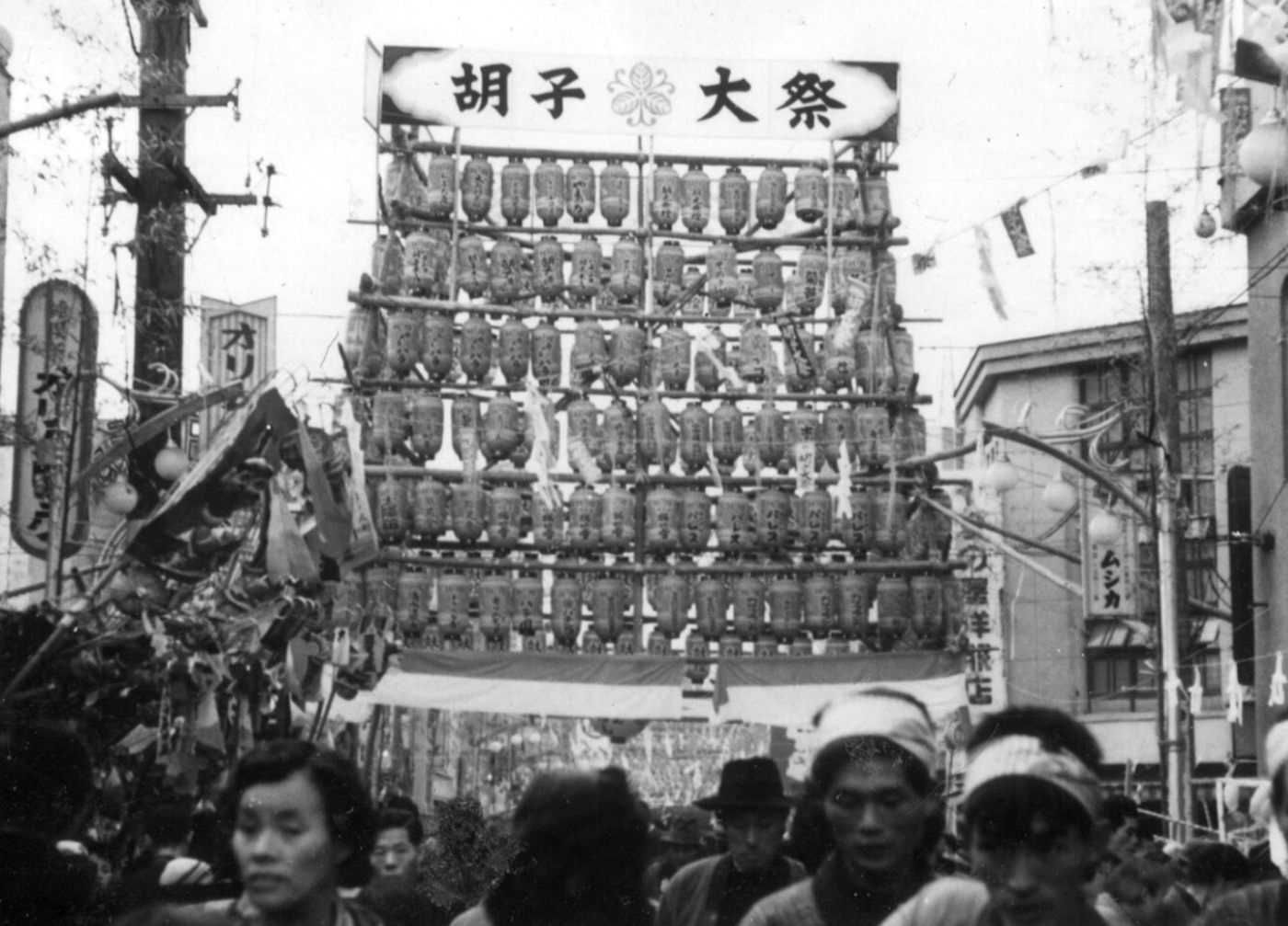
A keen photographer who, it is said, was rarely seen without his Leica hanging from his neck, Tatayoshi left behind around 100 black and white photographs taken between 1950 and 1955, thought to have been taken as a record of his work. The published photos are a small fraction of around 100 photos Takayoshi took at the festival.
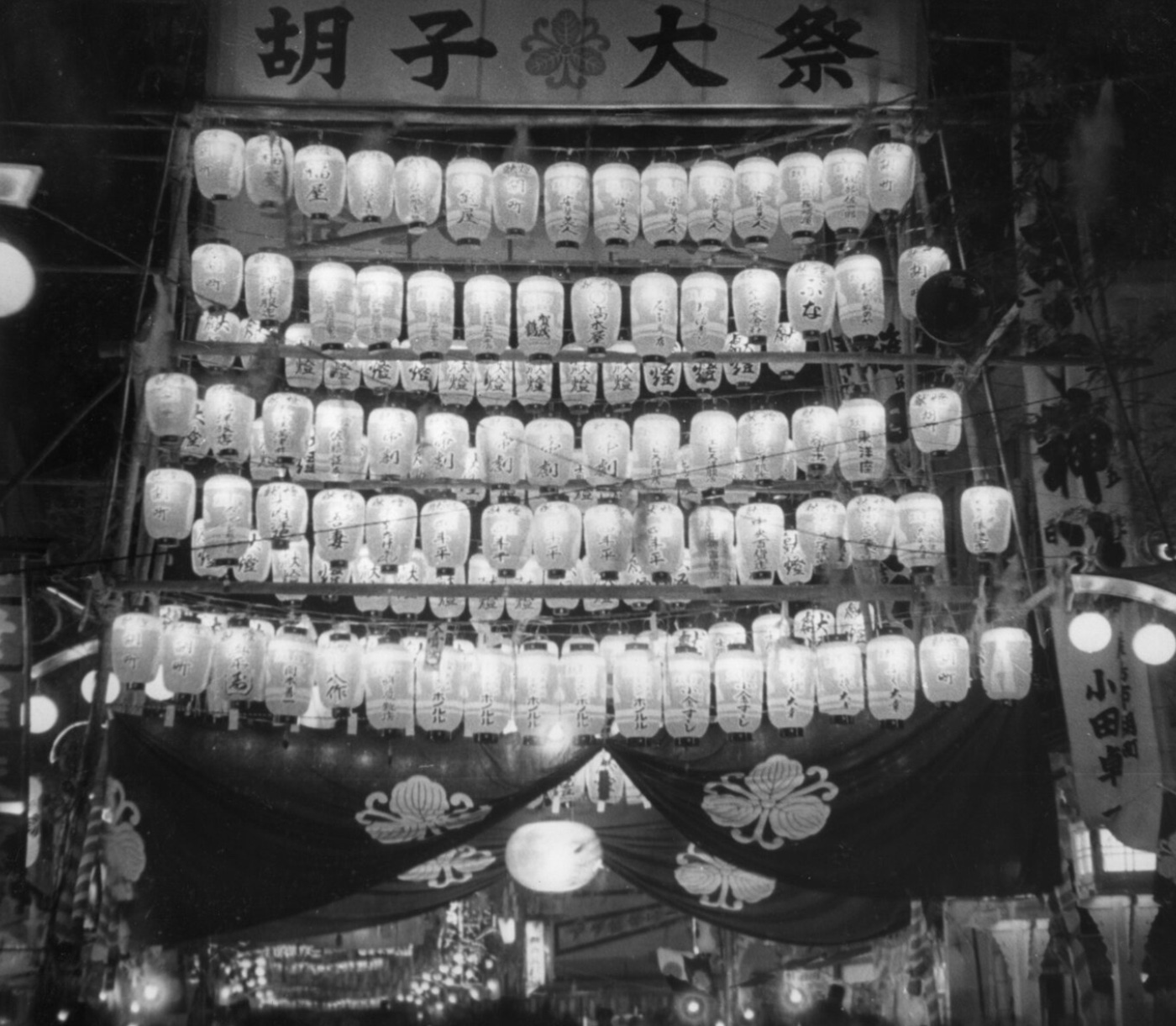
One photo of the Hondori shopping arcade shows a giant “Ebessan” face hanging from the roof of the arcade announcing Seimon Diffare (Big Sale).
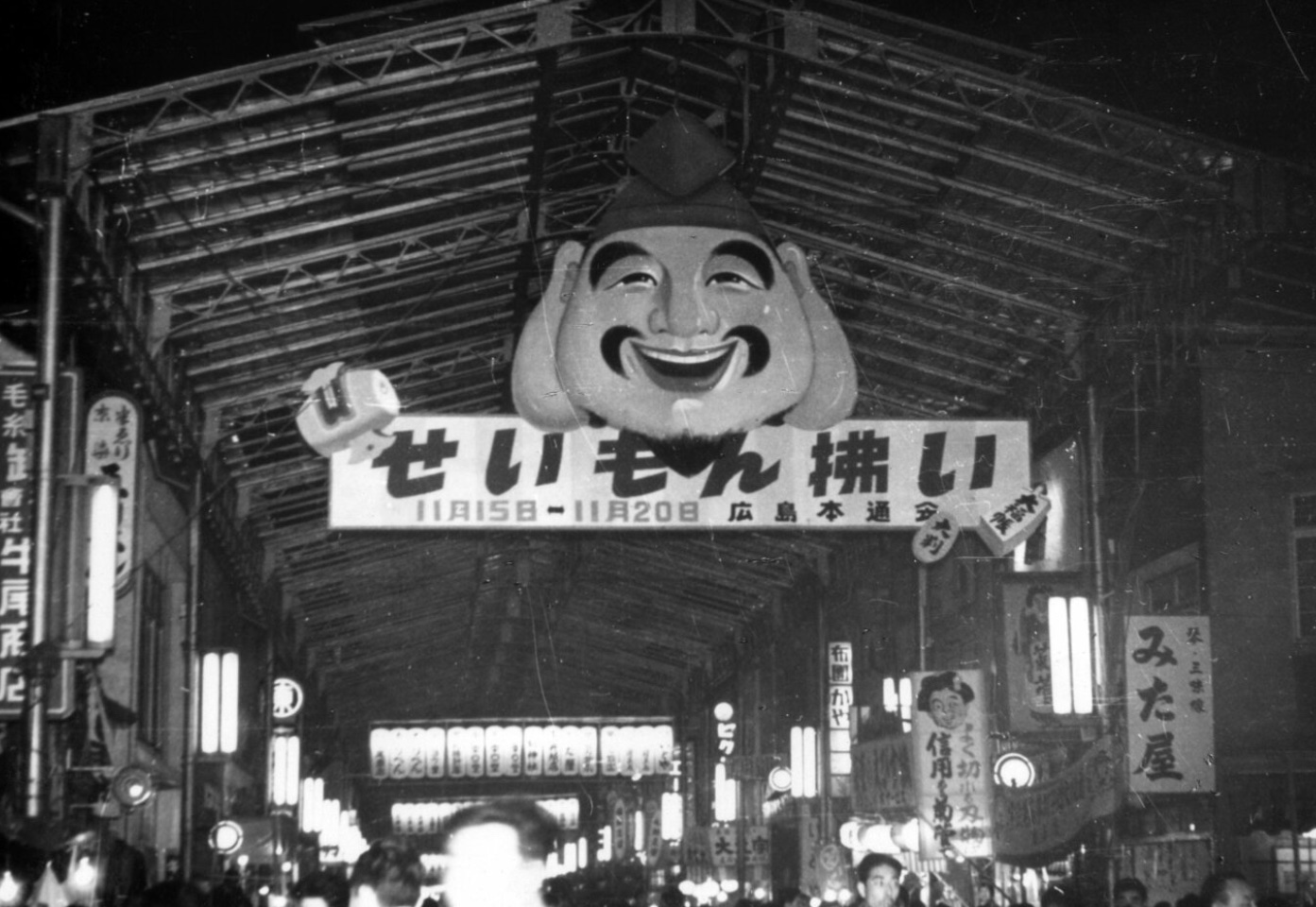
Takayoshi’s nephew, who was in elementary school at the time, is quoted as saying, “Clothing stores and shoe stores lined up their goods in front of the stores and sold them at a huge discount. There were huge crowds of people pushing and shoving each other.”
Another, taken along Ebisu-douri, where Ebisu Shrine is located, shows an advertisement for the Jame Dean movie East of Eden which was released in 1955.
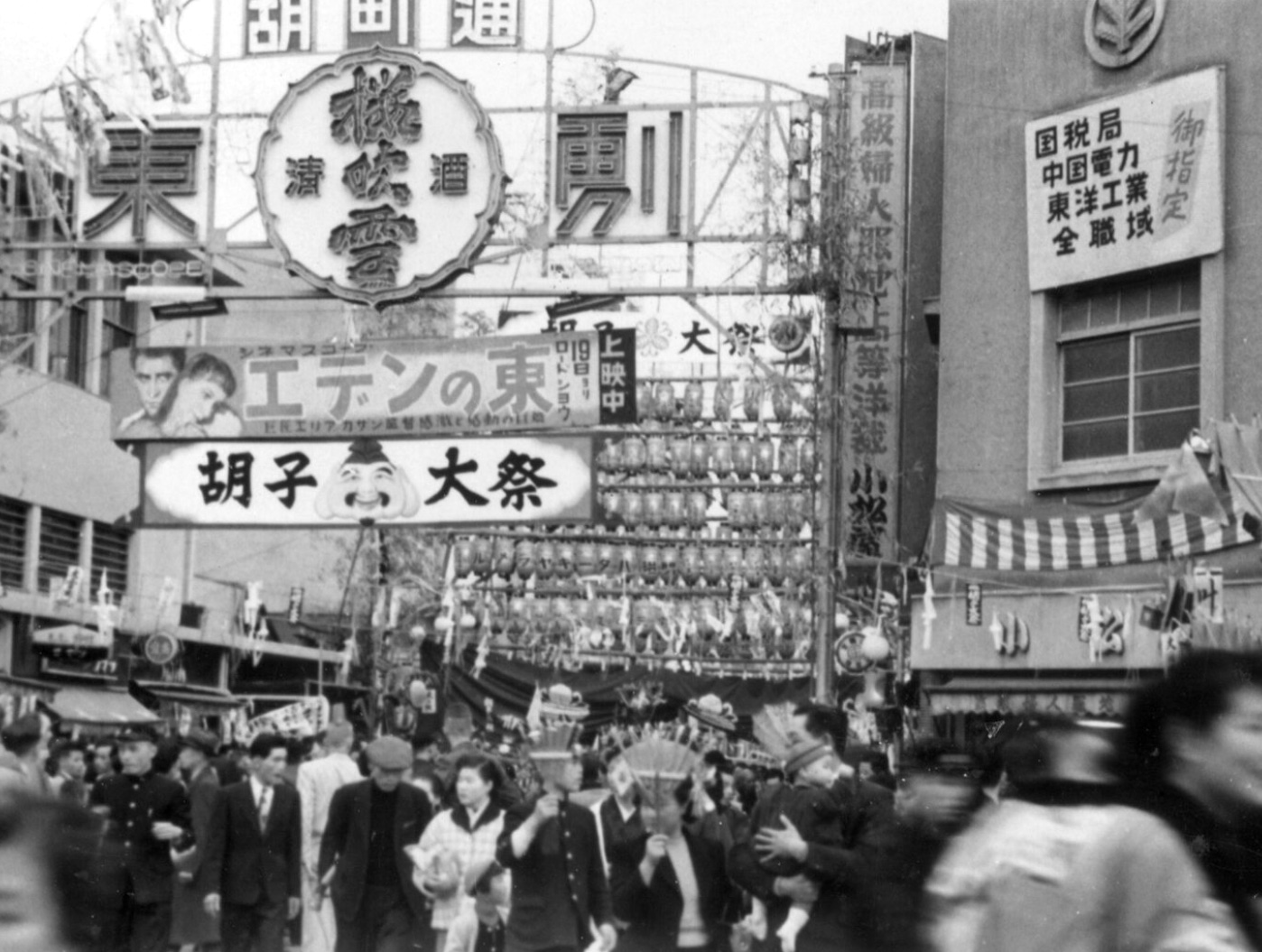
The photos are an inspiring record of a city on its way back after the absolute devastation of August 1945 and really help us feel a sense of connection with the blurred people in them as we take part in a festival that hasn’t really changed that much in the intervening years.
Source: Chugoku Shinbun
November 27, 2022


